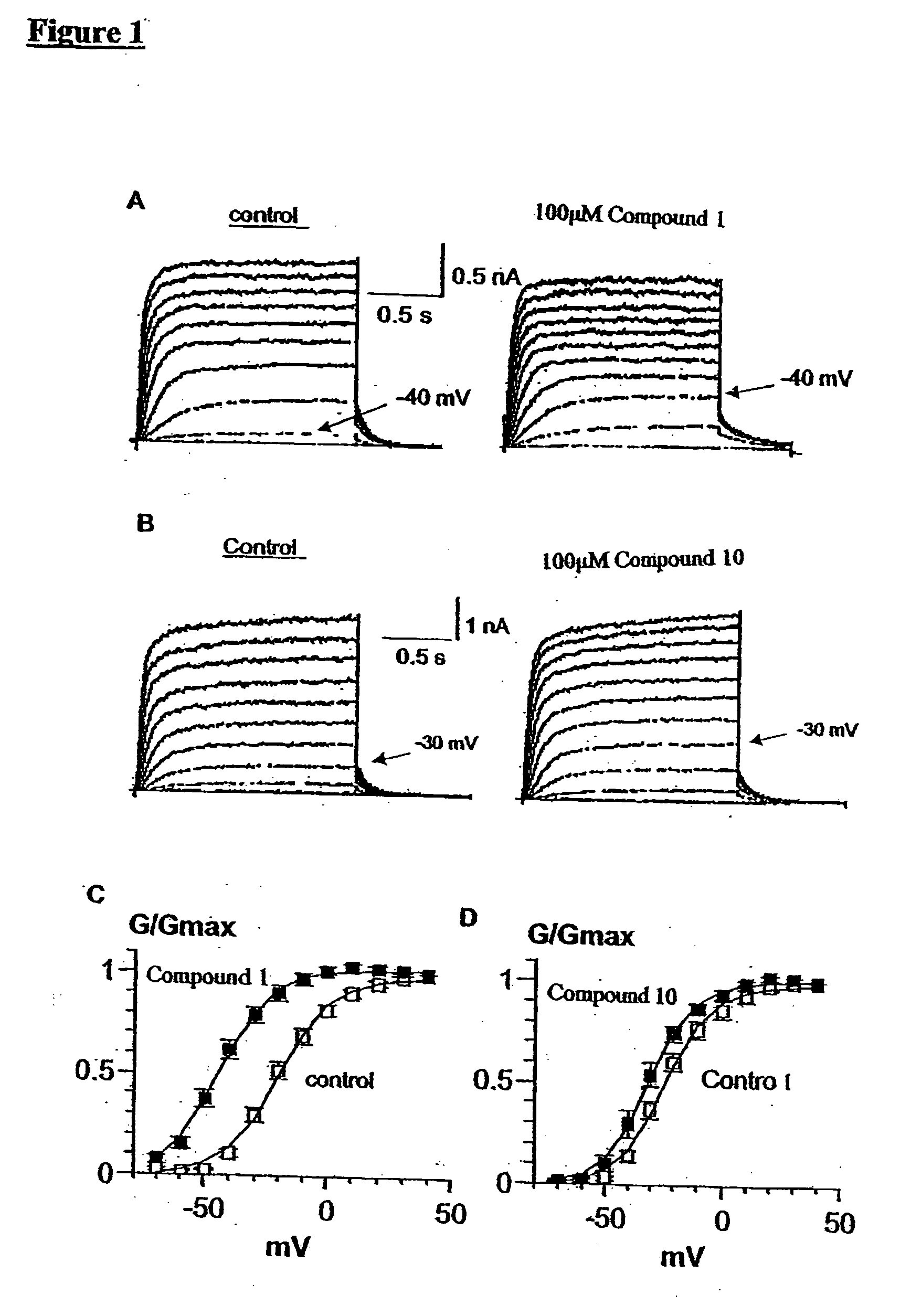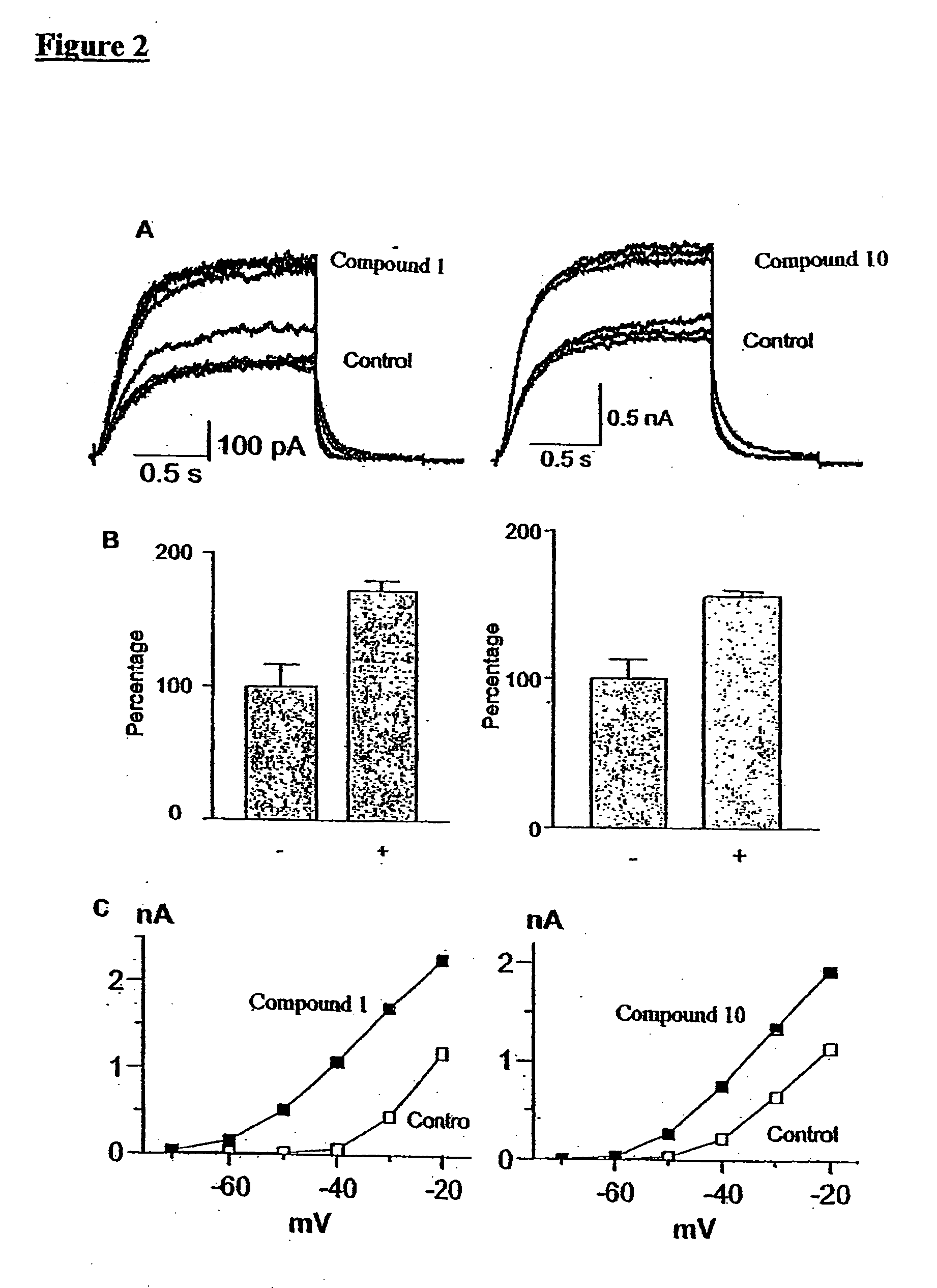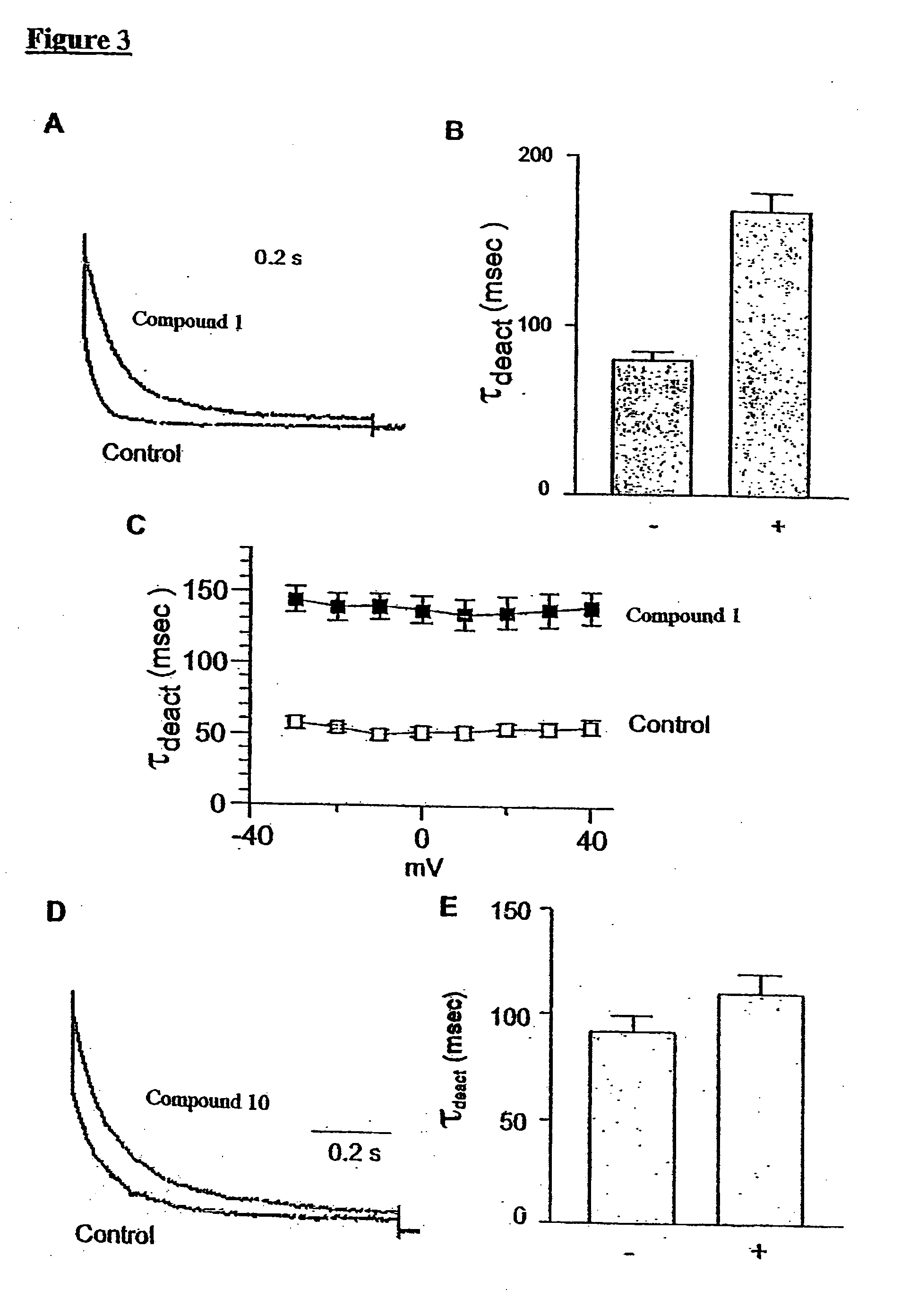Derivatives of N-phenylanthranilic acid and 2-benzimidazolone as potassium channel and/or neuron activity modulators
a technology of n-phenylanthranilic acid and 2-benzimidazolone, which is applied in the field of pharmaceuticals, can solve the problems of non-specific or even toxic modulators, difficult preparation,
- Summary
- Abstract
- Description
- Claims
- Application Information
AI Technical Summary
Benefits of technology
Problems solved by technology
Method used
Image
Examples
example 1
The Effect of Meclofenamic Acid (Compound 1) and 1-EBIO (Compound 10) on the KCNQ2 / 3 Current
[0336] The leftwards-shift of the voltage dependence of activation of the KCNQ2 / 3 current induced by Meclofenamic acid (1) and 1-EBIO (10) is discussed with reference to FIGS. 1A-1D.
[0337] When KCNQ2 and KCNQ3 subunits are expressed separately as homomeric channels in various expression systems, they give rise to relatively small potassium currents, especially for KCNQ3 (Wang et al. Science 282: 1890-1893 (1998) and Yang et al. J. Biol. Chem. 273: 19419-19423 (1998)). However, KCNQ2 co-expressed with KCNQ3 produces a current whose biophysical and pharmacological properties are very similar to those of the native M-current (Main et al. Mol. Pharmacol. 58: 253-262 (2000), Wang et al. Science 282: 1890-1893 (1998) and Yang et al. J. Biol. Chem. 273: 19419-19423 (1998)).
[0338] CHO cells were co-transfected with the two corresponding cDNAs of KCNQ2 and KCNQ3 at an equimolar ratio and exposed to...
example 2
Augmentation of the KCNQ2 / 3 Current Amplitude by Meclofenamic Acid (Compound 1) and 1-EBIO (Compound 10)
[0346] The augmentation of the KCNQ2 / 3 current amplitude by meclofenamic acid (Compound 1) and 1-EBIO (Compound 10) is discussed with reference to FIGS. 1A-1D and FIGS. 2A-2C.
[0347] As is shown in FIG. 2A, the KCNQ2 / 3 current increases in the presence of meclofenamic acid (Compound 1) and 1-EBIO (Compound 10). Traces were recorded in the absence (control) and presence of meclofenamic acid (Compound 1, left panel) or 1-EBIO (Compound 10, right panel). The cells were stepped to −20 mV for 1.5 second pulse duration. In this train protocol, the interval between the pulses was 30 seconds.
[0348]FIG. 2B shows the percentages of the current measured in the presence (+) or absence (−) of meclofenamic acid (Compound 1, left panel) or 1-EBIO (Compound 10, right panel), where the control is 100%.
[0349] In FIG. 2C, the current amplitude (nA) was plotted against the step voltage, in the hyp...
example 3
The Effect of Meclofenamic Acid (Compound 1) and 1-EBIO (Compound 10) on KCNQ2 / 3 Deactivation Kinetics
[0352] The slowing down of KCNQ2 / 3 deactivation kinetics caused by meclofenamic acid (Compound 1) and 1-EBIO (Compound 10) is discussed with reference to FIGS. 3A-3E.
[0353] In FIG. 3A the tail current (reflecting the channel deactivation process) of a cell before (control) and following application of meclofenamic acid (Compound 1) is shown. The prepulse was −20 mV while the tail potential was −60 mV.
[0354] In FIG. 3B the time constant resulting from the exponential fit of the tail current decay (τdeact), in the absence (−) and the presence of meclofenamic acid (Compound 1) (+) is depicted.
[0355] Although meclofenamic acid (Compound 1) and 1-EBIO (Compound 10) did not affect the KCNQ2 / 3 activation kinetics, they markedly slowed down the deactivation process. The decay of the tail current or deactivation reflects the transition of the channel from the open state to the close stat...
PUM
| Property | Measurement | Unit |
|---|---|---|
| Molar density | aaaaa | aaaaa |
| Molar density | aaaaa | aaaaa |
| Molar density | aaaaa | aaaaa |
Abstract
Description
Claims
Application Information
 Login to View More
Login to View More - R&D
- Intellectual Property
- Life Sciences
- Materials
- Tech Scout
- Unparalleled Data Quality
- Higher Quality Content
- 60% Fewer Hallucinations
Browse by: Latest US Patents, China's latest patents, Technical Efficacy Thesaurus, Application Domain, Technology Topic, Popular Technical Reports.
© 2025 PatSnap. All rights reserved.Legal|Privacy policy|Modern Slavery Act Transparency Statement|Sitemap|About US| Contact US: help@patsnap.com



